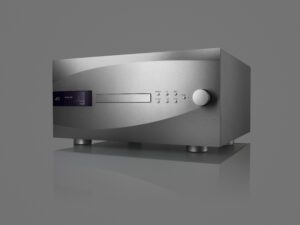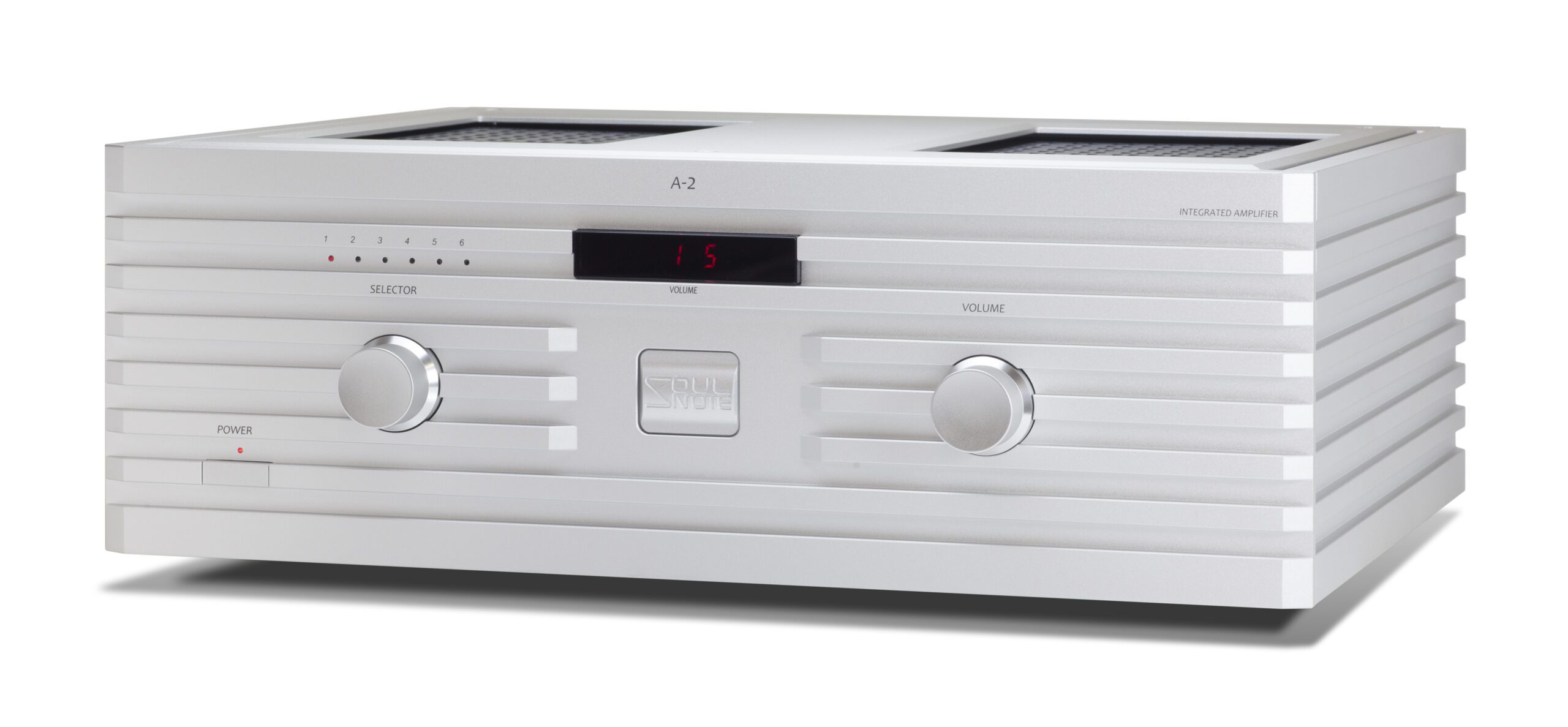
Founded in 2004 by ex-Marantz engineer/director Norinaga Nakazawa, SOULNOTE is a Japanese brand making high-end audio electronics. The range includes amplifiers, DACs, an SACD player, and phono stages – all manufactured in Japan.
SOULNOTE divides its products into three tiers: ‘ 1’ being ‘entry level’ (a relative term!) and ‘3’ their flagship series. All three levels feature outstanding build quality and exemplary finish. The A-2 integrated amplifier forms part of the intermediate series ‘2’ range.
It’s a fully-balanced dual-mono design using discrete components throughout. Six line inputs are featured – three balanced (XLR) and three unbalanced (RCA). Power output is 100W into 8 Ohms (200W into 4 Ohms), and the output stage operates in Class A/B. A large 600VA toroidal transformer is employed. The amp draws 125W when idling, rising to 355W at full power.
The power amp offers BTL (Bridge Tied Load) operation, and the amplifier can be used in one of six ways. With just one A-2, it can be used as an integrated or stereo power amplifier. However, add a second A-2, and there are options to use it as either a pure dual-mono integrated amplifier, a two-box dual-mono integrated amp for bi-amplification, a bridged mono power amplifier set-up or dual mono bi-amplifiers. The only pathways not open to the listener are to use your collection of A-2s as preamplifiers.
Class A bias biased
The output stage seems heavily biased towards Class A, so the amp runs hotter than other similar Class A/B amps. Case temperature reaches about 44°C (110°F), which is fairly warm, but not excessive. Weight is a reassuring 20kg, and build quality is excellent.
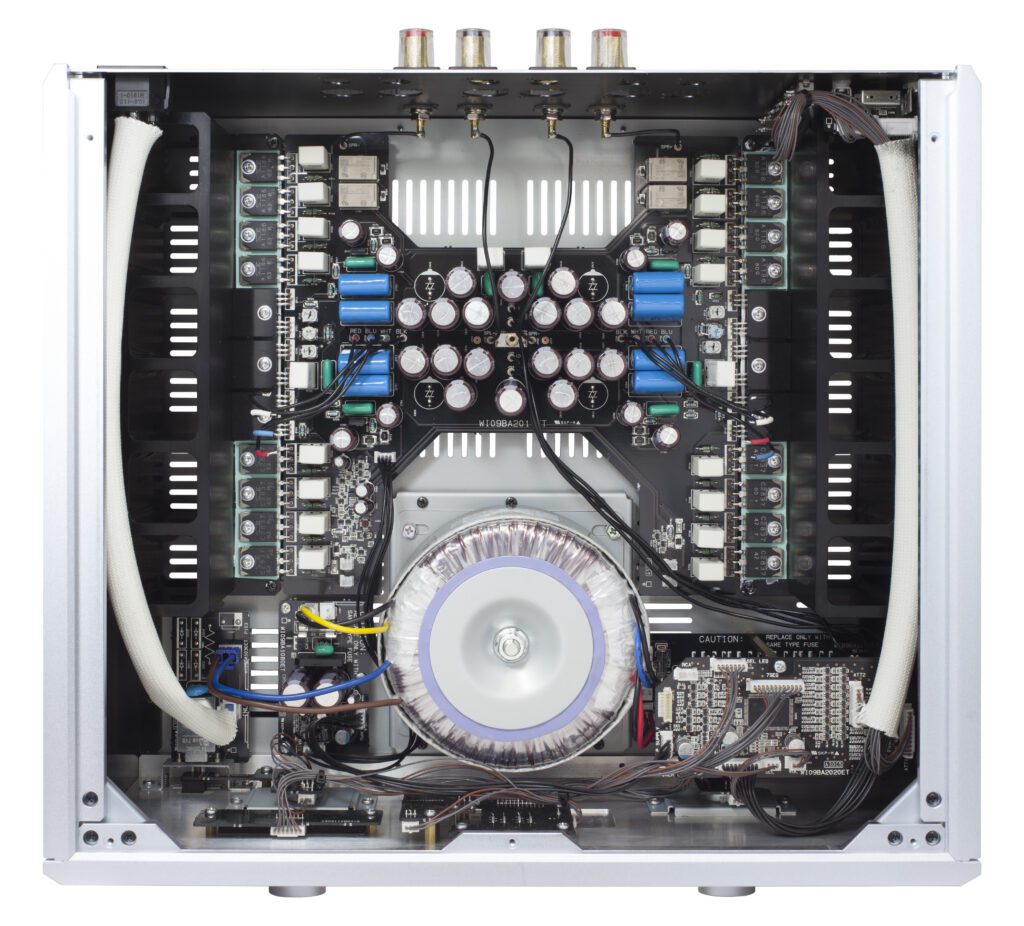
Zero negative feedback is a crucial part of SOULNOTE’s design philosophy. Chief designer Hideki Kato asserts that NFB produces no benefit in terms of sound quality. Measured steady-state specs might show improvement, but music is dynamic rather than static.
It’s akin to testing a car by driving it at speed on a flat straight road. It tells you how fast the vehicle can go, but doesn’t indicate manoeuvrability, or how well it accelerates or de-accelerates. Music is a bumpy road full of twists and turns, hills and dales, starts and stops…
Kato-san believes superior sound quality depends on accurately reproducing the original waveform in the time domain. Unfortunately, this is difficult to measure; changes for the better do not always produce measurable improvements.
Listen to everything
Consequently, SOULNOTE insists on listening tests to optimise circuit design, board layout, component choice, and mechanical construction. Make the right calls in these areas and start getting somewhere…
Ironically, the A-2 produces excellent static measurements. Distortion is very low at 0.03%, and the amplifier’s bandwidth runs from a subterranean 3Hz to 240kHz. SOULNOTE avoids DC servo circuits and current-mirror circuits due to their adverse effects on sound quality.
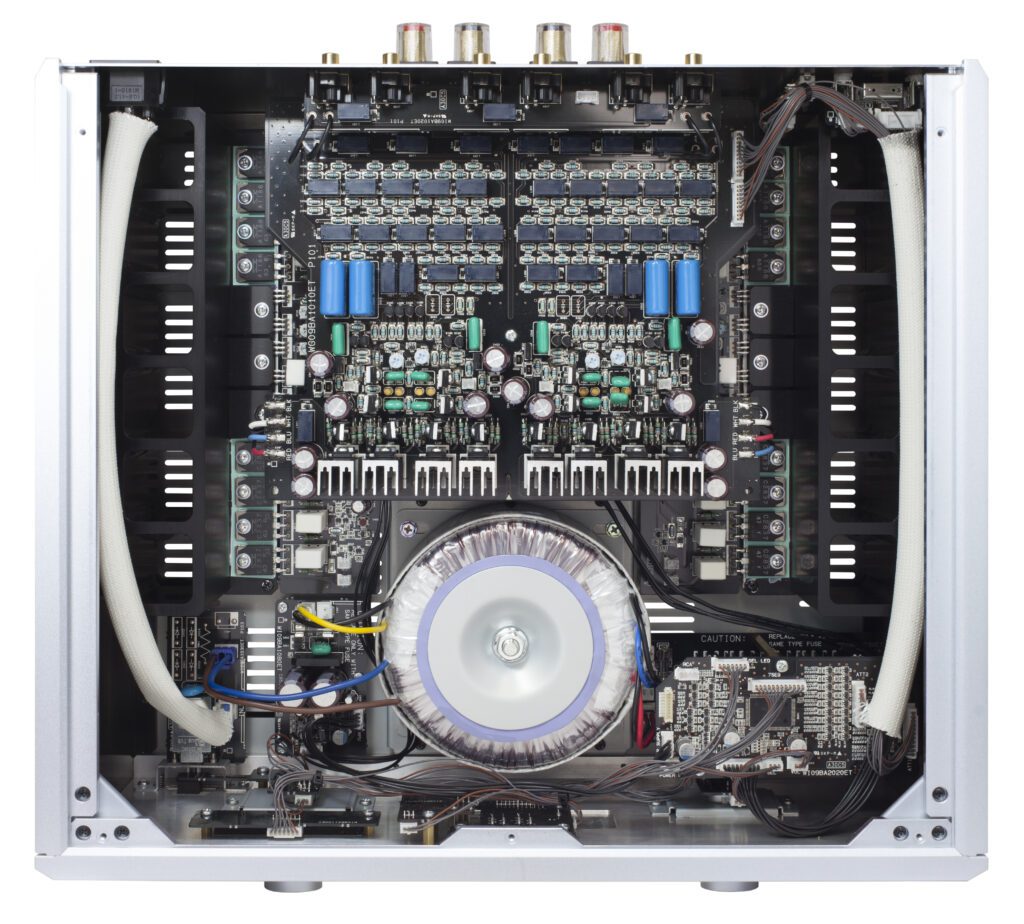
Volume is controlled by a balanced attenuator switch using high-quality relays and precision fixed resistors, rather than a conventional potentiometer or an electronic system. SOULNOTE claims this dramatically increases clarity, creating a more three-dimensional sound image.
Using fixed resistors also improves left/right channel-balance accuracy at low volume levels. However, a downside of this arrangement is it limits the number of discrete and level steps to just 35 in 2dB increments. So, ultra-fine adjustment of volume level is compromised slightly.
Is this a big drawback? Well, at times, I’d have liked to set the volume at a point between the options offered by the A-2. But if using fixed resistors and relay switching offers improved sound quality over standard volume-control methods, it’s worth having…
Look Ma, no DAC
Somewhat unusually for a modern amp, the A-2 does not contain a DAC. Maybe that’s a nod to the old Marantz philosophy of always keeping analogue and digital in separate boxes. But there’s a more practical reason with SOULNOTE – lack of space.
Using discrete components in the A-2 means the amplifier’s innards are pretty-full. There isn’t room for a DAC – especially not one using discrete components like SOULNOTE’s D-2. A peek inside the latter will soon make this clear…
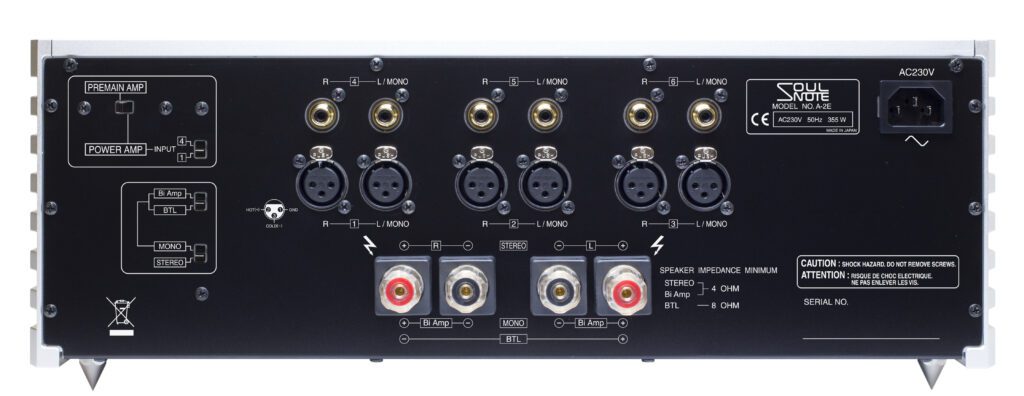
Electronically, the A-2 is more or less silent. Even using 102dB sensitive Klipsch Cornwall IVs, no residual hiss or hum is discernable. However, a small degree of mechanical transformer buzz is detectable when you’re close to the unit – but it is otherwise inaudible.
If desired, the amplifier sits on three flat metal feet, which can be fitted with spikes (supplied). The aluminium top plate is loose and decoupled, rather than screwed down tight, which is most unusual. Front and Side panels are 1.5cm thick aluminium, and ribbed for added strength.
First impressions were of a clean solidly-focused sound – muscular, detailed, clear, yet often surprisingly delicate and expressive. Musically, the SOULNOTE A-2 delivered authoritative results, yet sounded flexible and fluid. It was tight and defined without sounding rigid or over-controlled.
Going deep into the mix
The A-2 let you hear deep into the mix. It revealed subtle detail in the music; the specific qualities and characteristics of different recordings could be clearly discerned. It seemed to tease out more individuality, more variation.
Comparing the A-2 to my Musical Fidelity Nu-Vista 800, the MF was a tad drier and more forward; it sounded ‘flatter’ with less spatial depth. The SOULNOTE had a greater sense of space and refinement, with increased immediacy and clarity – qualities that made for a truer more-realistic sound.
On The Best of Lee Ritenour, the sound was very holographic, with excellent ‘out of the box’ imaging and vivid stereo with a nice depth perspective. Tracks like ‘Sun Song’, ‘Captain Fingers’, and ‘Caterpillar’ sounded smooth, refined, crisp, and immediate – full of impact and attack.
Playing an Opus 3 CD of Knud Jorgensen’s Jazz trio [CD 8401], Jorgensen’s piano sounded brilliant with a nice bright tactile tone. At 5m 38s, he plays a brief arpeggio – albeit, it is more like a fast sweep chord than a true arpeggio with distinct individual notes.
The A-2 kept the notes separate, conveying something that rhythmically felt more distinctive and expressive. All those little pianistic ebbs and flows, stresses and hesitations, were faithfully conveyed by the A-2, making the playing sound more expressive and interesting.
Natural, yet vivid
In Bach’s St John Passion with the Dunedin Consort under John Butt [Linn SACD CDK 419], the voices sounded natural yet vivid and always very ‘present’. The end result was nicely-forward, without unwanted tonal hardness or edge. The A-2 encompassed dynamic extremes without strain.
Playing Snow Patrol’s album Eyes Open, the A-2 delivered strong full-blooded results that were clean and free from congestion, even in the densest passages. The vocals separated nicely, creating an enjoyable transparent dimensional clear, open, and detailed result.
The A-2 certainly sounded good, but didn’t impose its specific qualities or characteristics on the music. Rather, it allowed the individual virtues of each recording to shine through. The A-2 can reveal things other amps gloss over, yet it’s not unforgiving.
On the Hyperion recording of Mozart’s piano concertos 11, 12, and 13 (chamber music versions) with Susan Tomes and the Gaudier Ensemble, the A-2 conveyed the delicate intimacy created by reduced forces, sounding crisply focused and effortlessly detailed.
The bass is firm, tight, and extended. The midband is solid and full, while the top sounds are lucid and tactile. The overall presentation is enticingly smooth, refined and fluid – albeit, only if the original recording has these qualities. The A-2 doesn’t deliver a rose-tinted view of things.
Fairy Dust excluded
It’s not an amplifier that sprinkles fairy dust over recordings. Yet, while it’s certainly truthful, it’s not unkind or intolerant of flaws. However, my review A-2 had seen action; the sound eased up and grew increasingly sweeter and richer after four or five days’ of steady use.
Using an external phono stage, the A-2 was great on vinyl. If CDs and Streaming were sometimes a bit too precise and sharp, LPs sounded crisp and focused yet spacious and not so tightly defined. Focus and Precision were evident, albeit with a more friendly, relaxed feel.
Once run-in, the A-2 sounds almost velvety – delivering a flowing beguiling-mellifluousness allied to impressive clarity and definition. It sounds fast, smooth, sweet, and open, and can highlight subtle differences in tonal balance while revealing delicate micro-dynamics.
Yet there’s no lack of attack and immediacy when this is called for – a real iron fist in a velvet glove. It can also sound very different from one album to the next and sometimes from track to track. The A-2 often surprised me. I liked it the more I listened to it.
Built to high standards, SOULNOTE’s A-2 is an elegant, graceful amplifier with some impressive chops. It has the crisp effortless authority and tonal refinement expected of a good tube amplifier and acts like an open window on the music.
Technical specifications
- Type Solid-state integrated amplifier with Bridged Tied Load dual mono/bi-amp modes
- Inputs 3× single-ended RCA pairs, 3x balanced XLR pairs. Line inputs only, optional use as mono inputs in BTL mode
- Power Output 100W × 2(8Ω), 200W × 2(4Ω), 400W(BTL MONO 8Ω)
- THD 0.03% (50W 8Ω)
- Freq Response Speaker (8Ω 1W) 3Hz~240kHz( 1.0dB)
- Impedance LINE 1,2,3,(Balance) 700mV/16kΩ,, LINE 4,5,6 700mV/8kΩ
- S/N 110dB (HF A Network)
- Power Consumption 355W(J60065), 125W(Idling)
- Measurement (W×H×D, with spikes) 43 × 16 × 41cm
- Weight 20.0kgs
- Price £6,300
Manufacturer
SOULNOTE
Distributor
Kog Audio
By Jimmy Hughes
More articles from this authorRead Next From Review
See all
PrimaLuna EVO 100 phono preamplifier
- Apr 22, 2024

Reiki Audio SuperSwitch Master Pro + Servant Pro
- Mar 27, 2024

Melco Audio N1-S38 music server
- Mar 27, 2024









